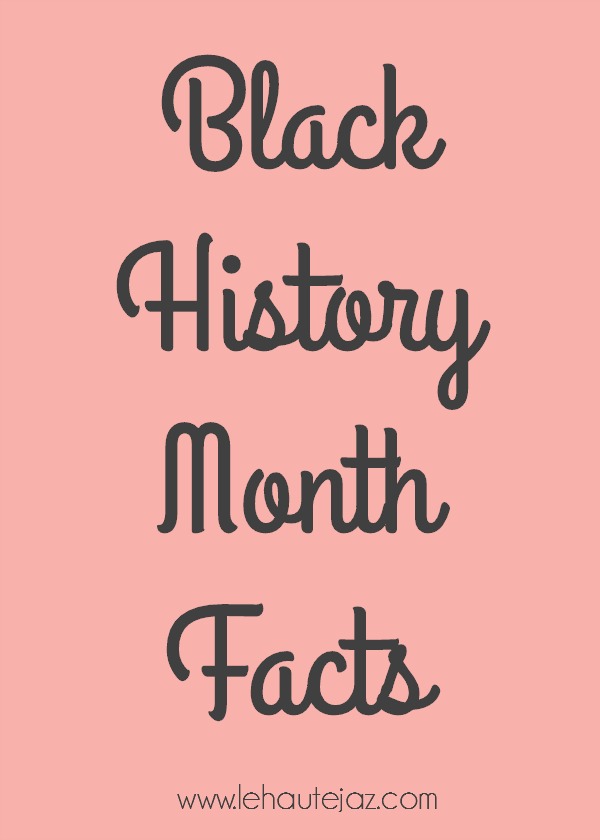
Happy Black History Month, y’all! It’s February again and that means it’s National African American History Month aka Black History Month. I’ve been sharing a few history facts on Facebook and Twitter, but I wanted to share some on the blog.
Now we all know about Harriett Tubman and Frederick Douglass, but I wanted to share a few other people who were just as amazing.
Nat Turner – He’s best known for leading an insurrection in Southampton County, Virginia in 1831. I actually have ‘The Confessions of Nat Turner’ on my reading list for this month and I cannot wait to see ‘The Birth of a Nation‘ when it’s released in theaters later this year.
Denmark Vasey – He’s best known for his failed insurrection in South Carolina. He was a former slave, born in St. Thomas who was born Telemaque and bought as a teen by sea captain Joseph Vesey. It was believed that Denmark faked an epileptic medical condition after being sold to a particularly cruel slave owner who then returned him to Joseph Vesey. Denmark eventually became Joseph’s “personal assistant” (though still a slave) and actually helped Joseph communicate with the salves he transported along the trade. This allowed Denmark to leave to read, write and speak both English and French. When Joseph decided to retire he chose South Carolina and naturally brought Denmark with him, but Denmark didn’t stay a slave for long. He won $1,500 in a local lottery and bought his freedom from Joseph for $600! The story behind Denmark’s name is what drew me to him when I learned about him in undergrad. He chose to take on Vasey as his last name once he was freed out of respect for his former owner and chose the first name of Denmark after the nation that ruled St. Thomas where he was born. He’d worked as a carpenter and built a name for himself, and even tried to buy the freedom of his wife and children but was unable to due to laws in the area. He helped establish the AME Church in Charleston and brought together more than 10% of the slave population in the area. Denmark Vasey was arrested, “tried” and hung for planning to liberate slaves in Charleston and sail to Haiti for refuge. He’d partnered with other freed men and slaves in the area and the 5 of them were tried and killed for trying to help their fellow slaves. Vasey was 20 years out of servitude when this happened, but didn’t forget where he came from and wanted other to taste the same freedom he had. He was 55 when he died.
Gabriel Prosser – He was another guy I learned about in undergrad. We all know that slaves were forbidden to read and write, often beaten or hung when their masters found out; Gabriel was different. Born enslaved in 1776 (the year America gained it’s freedom, how ironic) on the Brookfield tobacco plantation in Virginia. He was a Blacksmith by trade as was one of his two brothers. When Gabriel was in his mid-20’s he got together with some other slaves on the plantation and planned a large slave rebellion that was going to take place the summer of 1800, but his plans were foiled when information about the rebellion was leaked. Gabriel and his 25 partners were caught and hung.
Henry Highland Garnet – This amazing man was an abolitionist who escaped slavery the way most did in those days, by running away. He fled Maryland for freedom with his family as a child under the guise of attending a funeral and made it to Delaware before meeting up with other family members in New York. He was able to do what most couldn’t, go to school! He attended the African Free School in New York and later studied at the interracial Noyes Academy in New Hampshire. He was an abolitionist to the core, supporting the emigration of blacks to Mexico, Liberia and the West Indies, at least until the Civil War began. That’s when he threw all of his support behind black army units to aid the Union. Henry accomplished quite a bit in his life, he was appointed president of Avery College in Pittsburgh and pastor at Shiloh Presbyterian Church (aka the First Colored Presbyterian Church).
I hope you guys learned something new, I know I did when I studied this in undergrad. This was nowhere in my primary or secondary history books. Stay tuned for next week’s batch of Black History Month facts and feel free to comment below or send me an email!